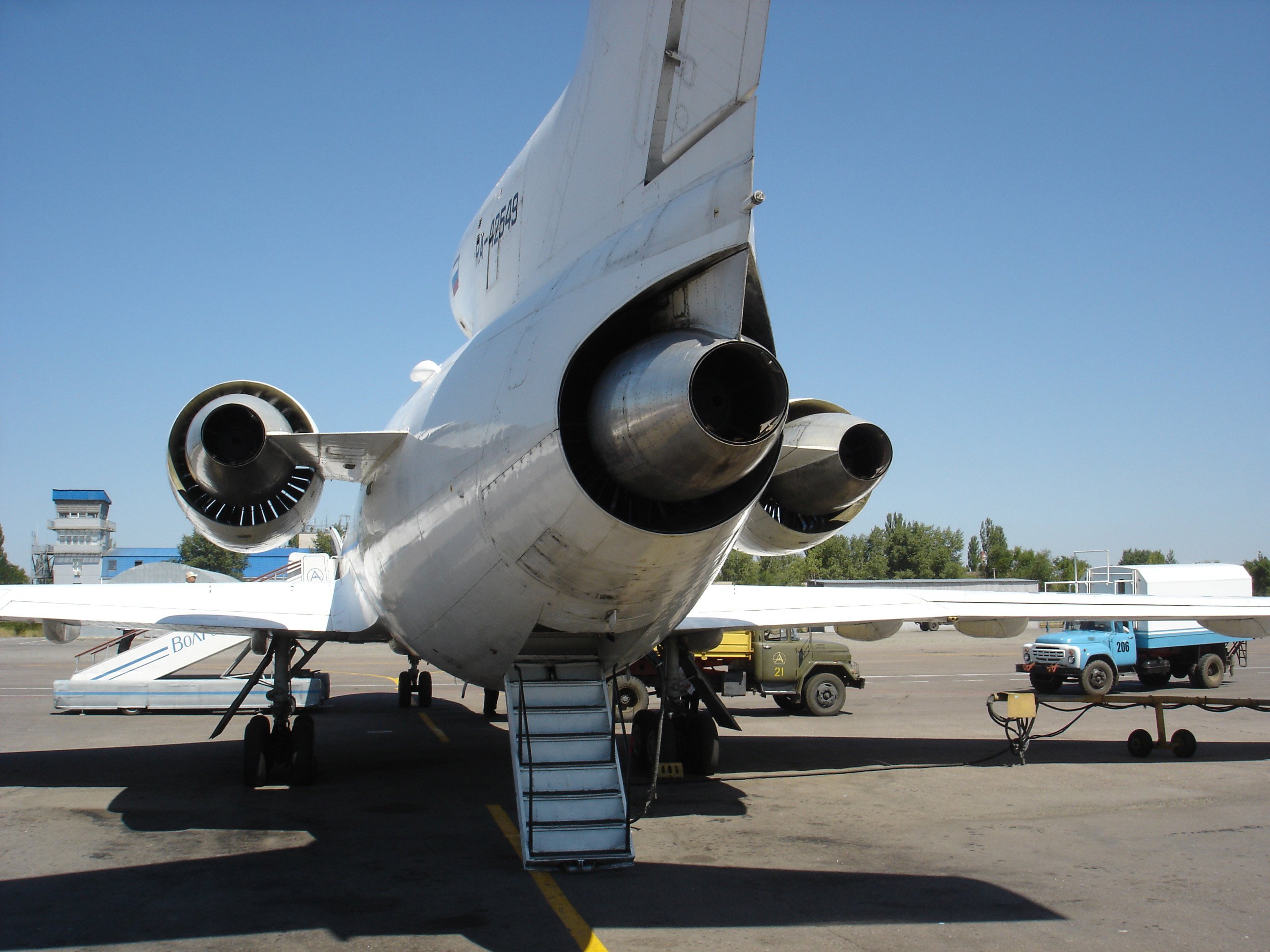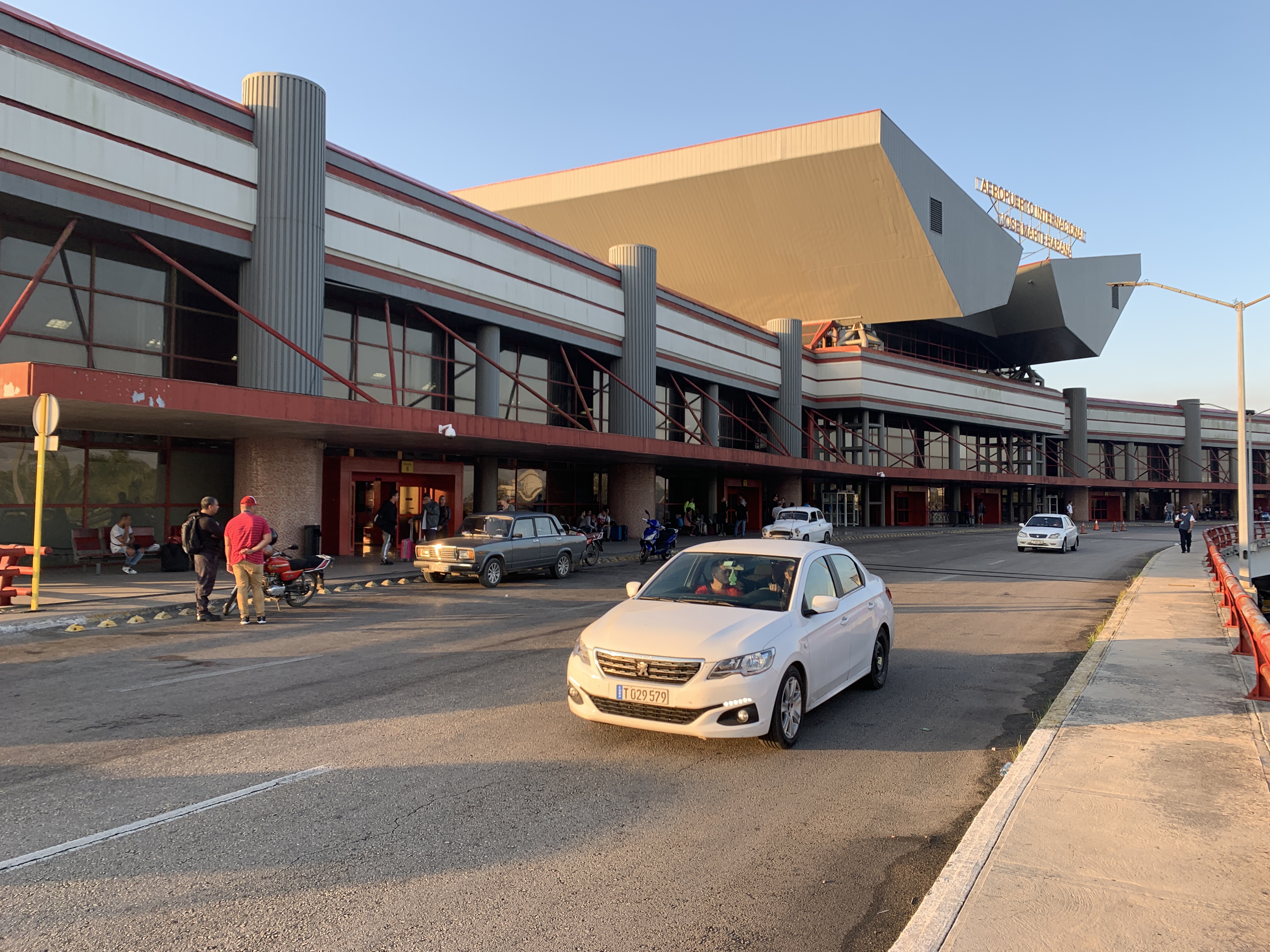|
Cubana De Aviación Flight 310
Cubana de Aviación Flight 310 was a scheduled international flight from José Martí International Airport, Havana, Cuba, to Arturo Michelena International Airport, Valencia, Venezuela, which crashed near Bejuma, Venezuela, on 25 December 1999. All 22 people on board were killed. Aircraft The aircraft involved was a Yakovlev Yak-42D, registration CU-T1285. The aircraft was manufactured in 1991 as msn 4520424914068., Accident The flight had departed José Martí International Airport, Havana, Cuba bound for Simón Bolívar International Airport in Caracas, Venezuela. Due to mudslides and flooding, the flight was diverted to Arturo Michelena International Airport in Valencia. The aircraft was held for 40 minutes. The pilots called Air Traffic Control at Valencia Airport to say that they were descending from to to get ready to approach. As Flight 310 started its approach to Valencia Airport the aircraft struck the San Luis Hill. The aircraft crashed near the town of Bejuma. ... [...More Info...] [...Related Items...] OR: [Wikipedia] [Google] [Baidu] |
Controlled Flight Into Terrain
In aviation, a controlled flight into terrain (CFIT; usually ) is an aviation accidents and incidents, accident in which an airworthy aircraft, under aircraft pilot, pilot control, is unintentionally flown into the ground, a mountain, a body of water or an obstacle. In a typical CFIT scenario, the aircrew, crew is unaware of the impending disaster until it is too late. The term was coined by engineers at Boeing in the late 1970s. Accidents where the aircraft is out of control at the time of impact, because of mechanical failure or pilot error, are not considered CFIT (they are known as ''uncontrolled flight into terrain'' or ''UFIT''), nor are incidents resulting from the deliberate action of the person at the controls, such as acts of terrorism or suicide by pilot. According to Boeing in 1997, CFIT was a leading cause of airplane accidents involving the loss of life, causing over 9,000 deaths since the beginning of the commercial jet aircraft. CFIT was identified as a cause of ... [...More Info...] [...Related Items...] OR: [Wikipedia] [Google] [Baidu] |
Bejuma
Bejuma is a small town in Carabobo State, Venezuela, seat of the Bejuma Municipality. Geography Bejuma is located at 667 metres over sea level. Vegetation and natural resources The municipality of Bejuma lies in the Cordillera La Costa Montane Forests ecoregion, and the major habitat type is tropical and subtropical moist broadleaf forests.''The Nature Conservancy'' (2009) TNC terrestrial ecoregions Based on: Olson, D. M. and E. Dinerstein. 2002. The Global 200: Priority ecoregions for global conservation. (PDF file) Annals of the Missouri Botanical Garden 89:125-126. History The town of Bejuma was founded in 1843 by the landowners of the "Fundo Bejuma" hacienda. Cubana de Aviación Flight 310, a Yakovlev Yak-42, crashed near Bejuma on 25 December 1999. The plane flew from Havana, Cuba to Simón Bolívar International Airport. Economy The economy of the region is based on agriculture. There are also some minor food processing plants in the area. Culture The Casa d ... [...More Info...] [...Related Items...] OR: [Wikipedia] [Google] [Baidu] |
Yakovlev Yak-42
The Yakovlev Yak-42 (russian: Яковлев Як-42; NATO reporting name: "Clobber") is a 100/120-seat three-engined mid-range passenger jet developed in the mid 1970s to replace the technically obsolete Tupolev Tu-134. It was the first airliner produced in the Soviet Union to be powered by modern high-bypass turbofan engines.Gunston, 1997 Development In 1972, the Yakovlev design bureau started work on a short- to medium-range airliner capable of carrying 100–120 passengers. It was intended to be a replacement for the Tupolev Tu-134 jet as well as the Ilyushin Il-18, Antonov An-24 and An-26 turboprop airliners. While the new airliner was required to operate out of relatively small airfields while maintaining good economy, as many Soviet airports had been upgraded to accommodate more advanced aircraft, it did not have to have the same ability to operate from grass strips as Yakovlev's smaller Yak-40. The requirement resulted in the largest, heaviest and most powerful airc ... [...More Info...] [...Related Items...] OR: [Wikipedia] [Google] [Baidu] |
Cubana De Aviación
Cubana de Aviación S.A., commonly known as Cubana, is Cuba's flag carrier, as well as the country's largest airline. It was founded in , becoming one of the earliest airlines to emerge in Latin America. It has its corporate headquarters in Havana, and its main base is located at José Martí International Airport. Originally a subsidiary of Pan American World Airways and later a private company owned by Cuban investors, Cubana has been wholly owned by the Cuban government since May 1959. Cubana was a founder and is a current member of the International Air Transport Association (IATA), the International Association of Aeronautical Telecommunications (SITA) and the International Association of Latin American Air Transportation (AITAL). History Early years to Cuban revolution The airline was established by Clement Melville Keys on 8 October 1929 as Compañía Nacional Cubana de Aviación Curtiss S.A., initially as a flying school as well as a charter carrier, beginning ... [...More Info...] [...Related Items...] OR: [Wikipedia] [Google] [Baidu] |
José Martí International Airport
José Martí International Airport , sometimes known by its former name Rancho Boyeros Airport, is an international airport located southwest of the centre of Havana, Cuba, and is a hub for Cubana de Aviación and Aerogaviota, and former Latin American hub for the Soviet (later Russian) airline Aeroflot. It is Cuba's main international and domestic gateway, and serves several million passengers each year. The airport is operated by ''Empresa Cubana de Aeropuertos y Servicios Aeronáuticos'' ''(ECASA)''. The airport lies in the municipality of Boyeros and connects Havana with the rest of the Caribbean, North, Central and South America, as well as Europe. It is named in memory of patriot and poet José Martí. In the 1960-1990s the airport was used by bombardiers to send revolutionaries to Central America. Private Cuban citizens are not allowed to own aircraft; all aircraft in Cuba belong to state-owned airlines or the military. Only government- and foreign-owned aircraft are al ... [...More Info...] [...Related Items...] OR: [Wikipedia] [Google] [Baidu] |
Havana
Havana (; Spanish: ''La Habana'' ) is the capital and largest city of Cuba. The heart of the La Habana Province, Havana is the country's main port and commercial center.Cuba ''''. . The city has a population of 2.3million inhabitants, and it spans a total of – making it the largest city by area, the most populous city, and the [...More Info...] [...Related Items...] OR: [Wikipedia] [Google] [Baidu] |
Simón Bolívar International Airport (Venezuela)
Maiquetía "Simón Bolívar" International Airport (, es, link=no, Aeropuerto Internacional de Maiquetía "Simón Bolívar") is an international airport located in Maiquetía, Vargas, Venezuela, about west of downtown Caracas, the capital of the country. Simply called by the local population, it is the main international air passenger gateway to Venezuela. It handles flights to destinations in the Americas, Europe and the Middle East. History The airport opened in 1945 as the . The site had been recommended as an appropriate location for an airport by Charles Lindbergh on behalf of Pan Am. The USA subsidised the construction of the airport as part of the Airport Development Program. Luis Malaussena was the architect who designed the original passenger terminal. It was regularly visited by the Anglo-French supersonic airliner Concorde until the 1980s. Commencing in the late 1970s, Air France operated weekly Concorde service between Caracas and Paris via a stop at Santa Ma ... [...More Info...] [...Related Items...] OR: [Wikipedia] [Google] [Baidu] |
Arturo Michelena International Airport
Arturo Michelena International Airport is an airport serving the city of Valencia in Venezuela. The airport was named after artist Arturo Michelena, who was born in Valencia. It is a hub for Turpial Airlines and a secondary hub for Avior Airlines. Airlines and destinations See also *Transport in Venezuela *List of airports in Venezuela Venezuela, officially known as the Bolivarian Republic of Venezuela ( es, República Bolivariana de Venezuela), is a country on the northern coast of South America. It is a continental mainland with numerous islands located off its coastline in th ... References External links OurAirports - Valencia Airports in Venezuela [...More Info...] [...Related Items...] OR: [Wikipedia] [Google] [Baidu] |
Valencia, Carabobo
Valencia () is the capital city of Carabobo State and the third-largest city in Venezuela. The city is an economic hub that contains Venezuela's top industries and manufacturing companies. It is also the largest city in the Valencia-Maracay metropolitan region, which with a population of about 4.5 million is the country's second largest after that of Caracas. Caracas lies some away to the east. History The area was already inhabited in the fourth millennium BC. The inhabitants were mainly hunters and gatherers who might have already developed some elementary forms of agriculture. Between AD 200 and 1000 an important settlement was formed close to Lake Valencia. Around the year 1000, waves of migration started to come from the Orinoco river area, probably arriving along the Pao river. The fusion of previous settlements with these new populations gave rise to the Vacencioide culture. People in the area belonged mostly to Arawak groups. They were hunters and gatherers who ... [...More Info...] [...Related Items...] OR: [Wikipedia] [Google] [Baidu] |
Coordinated Universal Time
Coordinated Universal Time or UTC is the primary time standard by which the world regulates clocks and time. It is within about one second of mean solar time (such as UT1) at 0° longitude (at the IERS Reference Meridian as the currently used prime meridian) and is not adjusted for daylight saving time. It is effectively a successor to Greenwich Mean Time (GMT). The coordination of time and frequency transmissions around the world began on 1 January 1960. UTC was first officially adopted as CCIR Recommendation 374, ''Standard-Frequency and Time-Signal Emissions'', in 1963, but the official abbreviation of UTC and the official English name of Coordinated Universal Time (along with the French equivalent) were not adopted until 1967. The system has been adjusted several times, including a brief period during which the time-coordination radio signals broadcast both UTC and "Stepped Atomic Time (SAT)" before a new UTC was adopted in 1970 and implemented in 1972. This change also a ... [...More Info...] [...Related Items...] OR: [Wikipedia] [Google] [Baidu] |
Cubana De Aviación Accidents And Incidents
Cubana de Aviación, the national carrier of Cuba Cuba ( , ), officially the Republic of Cuba ( es, República de Cuba, links=no ), is an island country comprising the island of Cuba, as well as Isla de la Juventud and several minor archipelagos. Cuba is located where the northern Caribbea ..., has been involved in 51 incidents and accidents between 1934 and 2018, 27 of which had 1 fatality or more, with 708 fatalities. Included are ground and collision fatalities and hijackings. List See also * List of Cuba–United States aircraft hijackings Notes References External linksCubana de Aviacion – Accidents and terrorism* {{DEFAULTSORT:Cubana de Aviacion accidents and incidents accidents and incidents Lists of aviation accidents and incidents ... [...More Info...] [...Related Items...] OR: [Wikipedia] [Google] [Baidu] |
Aviation Accidents And Incidents In 1999
Aviation includes the activities surrounding mechanical flight and the aircraft industry. ''Aircraft'' includes fixed-wing and rotary-wing types, morphable wings, wing-less lifting bodies, as well as lighter-than-air craft such as hot air balloons and airships. Aviation began in the 18th century with the development of the hot air balloon, an apparatus capable of atmospheric displacement through buoyancy. Some of the most significant advancements in aviation technology came with the controlled gliding flying of Otto Lilienthal in 1896; then a large step in significance came with the construction of the first powered airplane by the Wright brothers in the early 1900s. Since that time, aviation has been technologically revolutionized by the introduction of the jet which permitted a major form of transport throughout the world. Etymology The word ''aviation'' was coined by the French writer and former naval officer Gabriel La Landelle in 1863. He derived the term from the ... [...More Info...] [...Related Items...] OR: [Wikipedia] [Google] [Baidu] |






